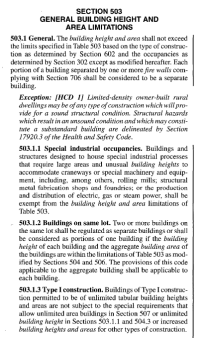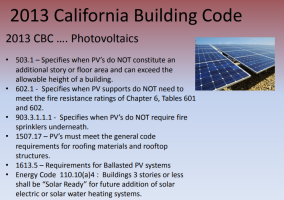NFPAnarc
REGISTERED
Does anyone know the origin or development of the CBC Section 503.1 Exception 3 language? To my knowledge there is no commentary language to state amended versions of the IBC, but I'm curious how they determined the maximum array coverage area and separations. When used in conjunction with 903.1.1.3 it seems like you could sort of create a partially covered parking lot without requiring sprinkler protection or creating an open parking garage.





